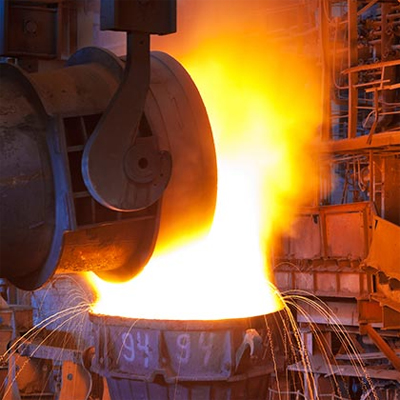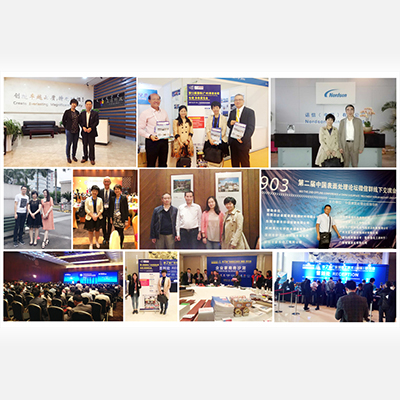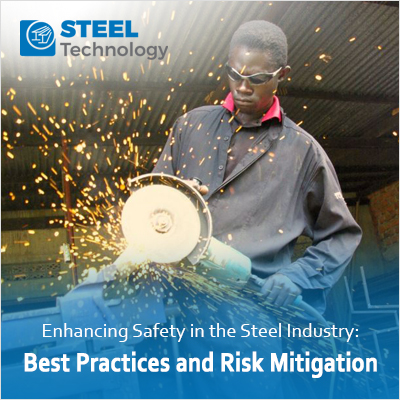The Power of Strip Processing Lines: How to Maximize Efficiency

Strip processing lines play a crucial role in various industries, including metal fabrication, automotive, and steel production. These lines are designed for high-volume processing of metal strips or coils, and maximizing efficiency is essential for optimizing production output and reducing costs. Here are some strategies to harness the power of strip processing lines and maximize efficiency:
Automated Material Handling:
Automated material handling is integral to the efficiency of strip processing lines, offering a streamlined approach to loading and unloading materials. By implementing advanced systems, such as conveyor systems and robotic arms, manufacturers can significantly reduce manual labor, minimize downtime, and enhance overall productivity. Conveyor systems facilitate the seamless movement of coils between different processing stages, with various types available based on specific production needs.
| Also Read: Innovations in Strip Processing for Steel Industry Advancements |
Robotic arms provide precise and flexible material handling capabilities, offering high-speed and accurate positioning of coils. Automated loading and unloading stations equipped with clamping and lifting mechanisms further reduce the need for manual intervention, ensuring a smooth transition from raw materials to finished products. Integrating RFID or barcode systems for material tracking enhances real-time visibility, while Automated Storage and Retrieval Systems (AS/RS) optimize warehouse space and expedite material retrieval. Safety features, including sensors and cameras, contribute to accident prevention and equipment protection. Seamless integration with control systems allows for centralized monitoring and coordination. With scalability and flexibility considerations, manufacturers can adapt these automated systems to changing production requirements, ensuring sustained efficiency in strip processing lines.
Integrated Quality Control:
Integrated quality control is a pivotal aspect of optimizing strip processing lines, ensuring the continuous monitoring and enhancement of material quality. The installation of sensors and cameras along the processing line enables real-time scrutiny of materials, providing a comprehensive view of their characteristics. These advanced technologies play a crucial role in detecting defects, variations in thickness, or surface irregularities. Automated quality control measures are implemented to swiftly identify and address any discrepancies, preventing the production of faulty parts. By incorporating these systems into the production process, manufacturers can not only minimize the risk of defective outputs but also enhance overall product quality. The seamless integration of sensors and automated quality control measures contributes to a more efficient and reliable strip processing line, reducing the likelihood of rework and ensuring the delivery of high-quality end products to customers.
| Also Read: What Are the Benefits of Strip Processing in Steel? |
Optimized Line Speeds:
Optimizing line speeds is a key strategy in maximizing the efficiency of strip processing lines. The adjustment of line speeds based on the characteristics of the material being processed and the specific operation is crucial to achieving a balance between speed and precision. Striking this balance is essential for ensuring efficient processing without compromising the quality of the end product.
Regular analysis and fine-tuning of line speeds are imperative to prevent bottlenecks and optimize overall throughput. This dynamic approach to speed management allows manufacturers to adapt to varying production requirements, minimizing the risk of delays and ensuring a smooth and continuous flow throughout the processing line. By consistently evaluating and adjusting line speeds, manufacturers can enhance efficiency, reduce operational challenges, and ultimately improve the overall performance of strip processing lines.
Quick Changeover Capabilities:
In the realm of strip processing lines, quick changeover capabilities stand as a pivotal strategy for enhancing operational efficiency. The design of processing lines with the ability to swiftly transition between different products or materials plays a crucial role in minimizing downtime. This capability enables manufacturers to adapt promptly to changing production requirements, contributing to a more agile and responsive manufacturing environment. By utilizing standardized tooling and equipment, adjustments between different product runs become faster and more streamlined. This standardized approach not only facilitates seamless changeovers but also ensures consistency and reliability in the production process. With an emphasis on quick changeover capabilities, manufacturers can significantly reduce idle time, enhance overall productivity, and maintain a competitive edge in the dynamic landscape of strip processing.
Predictive Maintenance:
The adoption of predictive maintenance techniques is a critical strategy in optimizing the reliability and efficiency of strip processing lines. By leveraging sensors and advanced monitoring systems, manufacturers can predict equipment failures before they occur. This proactive approach allows for timely intervention, preventing unexpected downtime and minimizing disruptions to the production process. Regularly scheduled maintenance, based on predictive data, becomes a cornerstone of this strategy. Instead of relying on fixed maintenance schedules, manufacturers can tailor their maintenance activities to the actual condition of the equipment, ensuring that interventions are carried out precisely when needed. This not only extends the lifespan of machinery but also helps maintain optimal equipment performance over time. Through the implementation of predictive maintenance, manufacturers can enhance operational reliability, reduce maintenance costs, and ultimately contribute to the overall efficiency and longevity of strip processing lines.
Energy Efficiency:
Prioritizing energy efficiency is a fundamental aspect of optimizing strip processing lines, with the potential to yield significant cost savings and environmental benefits. Manufacturers can strategically invest in energy-efficient equipment and technologies, ranging from advanced machinery to more energy-conscious components. By doing so, operating costs can be substantially reduced, contributing to improved overall profitability. To further enhance energy efficiency, the implementation of energy management systems becomes crucial. These systems enable continuous monitoring and analysis of energy consumption throughout the strip processing line. By identifying areas of inefficiency and implementing targeted optimizations, manufacturers can not only minimize energy waste but also promote sustainable practices. Through a holistic approach to energy efficiency, manufacturers can achieve a balance between operational effectiveness and environmental responsibility, positioning their strip processing lines for long-term success in an increasingly resource-conscious landscape.
Process Integration:
Process integration stands as a cornerstone in the quest for optimal efficiency within strip processing lines. The seamless integration of various processing stages forms a cohesive workflow that minimizes unnecessary handling and transportation steps. By unifying these stages, manufacturers can eliminate bottlenecks and streamline the production process, reducing idle time and enhancing overall operational efficiency. Effective communication and coordination between different stages become paramount in achieving this integration. Ensuring that each component of the production line is synchronized and informed enables a smooth flow of materials and information, preventing delays and optimizing throughput. This holistic approach to process integration not only reduces operational complexities but also maximizes the overall efficiency of strip processing lines, ultimately contributing to improved productivity and cost-effectiveness.
Employee Training and Engagement:
Employee training and engagement are vital elements in the pursuit of peak efficiency within strip processing lines. Providing comprehensive training for operators plays a key role in enhancing their skills and understanding of the intricacies of the processing line. Well-trained operators are better equipped to navigate the machinery, troubleshoot issues, and optimize processes, contributing to a more efficient and effective operation.
In addition to training, fostering a culture of continuous improvement is essential. Encouraging employees to actively participate in identifying and implementing efficiency-enhancing ideas creates a dynamic and innovative work environment. Employees at all levels should feel empowered to contribute insights and propose improvements based on their firsthand experiences. This engagement not only harnesses the collective intelligence of the workforce but also instills a sense of ownership and commitment to the success of the strip processing line.
By investing in employee training and promoting a culture of continuous improvement, manufacturers can unlock the full potential of their workforce, creating a collaborative and motivated team capable of driving efficiency gains and adapting to evolving production challenges.
Data Analytics and Optimization:
Harnessing the power of data analytics and optimization is instrumental in elevating the efficiency of strip processing lines. By leveraging data analytics, manufacturers can gain valuable insights into production performance, enabling them to identify bottlenecks and areas for improvement. Analyzing key metrics and patterns empowers decision-makers to make informed adjustments to the production process, optimizing workflows and minimizing inefficiencies.
To further enhance efficiency, the implementation of advanced control systems and machine learning algorithms becomes pivotal. These technologies enable dynamic adjustments of parameters based on real-time data, allowing the system to adapt and optimize its performance continuously. Machine learning algorithms can learn from historical data, predict potential issues, and proactively adjust settings to maintain optimal efficiency.
The synergy between data analytics and advanced control systems creates a data-driven approach to production, fostering adaptability and responsiveness. By continuously refining and optimizing processes through insights derived from data, manufacturers can achieve higher levels of efficiency, reduce operational costs, and stay agile in a rapidly changing industrial landscape.
Continuous Improvement:
A commitment to continuous improvement lies at the heart of optimizing strip processing lines. Manufacturers should establish a structured continuous improvement program that systematically assesses and refines operational processes. Regular evaluations ensure that the production line remains agile and responsive to changing demands, allowing for the identification and elimination of inefficiencies over time.
An integral aspect of this improvement initiative involves actively seeking feedback from operators and other stakeholders. By encouraging input from those directly involved in the day-to-day operations, valuable insights are gathered to identify areas for improvement and innovation. Operators, with their frontline experience, often possess unique perspectives that can lead to practical and impactful enhancements.
This collaborative approach not only empowers the workforce but also fosters a culture of innovation and adaptability. Through ongoing assessments, refinements, and the incorporation of feedback, manufacturers can instill a continuous improvement mindset within the organization, ensuring that the strip processing lines evolve to meet the highest standards of efficiency and effectiveness.
By implementing these strategies, manufacturers can harness the power of strip processing lines to achieve higher efficiency, increased production output, and ultimately, improved profitability. Regularly reviewing and updating processes in response to changing requirements and technological advancements will ensure sustained success.











